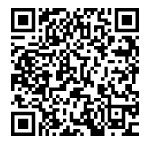Introduction
Car safety plays a crucial role to diminish the occurrence of a vehicle accident and its consequences. Safety devices that protect passengers in the event of an accident were introduced about 50 years ago. Automobile safety features such as seat belts, harnesses, airbags, headrests, and other devices are meant to protect occupants of vehicles from injury in case of an accident.
Nowadays, Safety system devices are divided into the following two types in standard automobile models:
- Active safety system: These are also called the Primary Safety system. Active safety devices reduce the chances of an accident or collision in the first place. These features provide an extra layer of protection to an automobile while driving on a road. Active safety systems stay always active during a drive. Most of the active safety systems are electronic and controlled by sensors. Traction control, electronic stability control, and braking systems are some examples of the active safety features of an automobile.
- Passive safety systems: Passive safety systems do not work until they are called to action. Passive safety devices become active during an accident and work to minimize damage and reduce the risk of injury during the time of the crash. Seat belts, airbags, and the construction of the vehicle are the passive safety system of an automobile. These safety systems automatically deploy when the car gets into a collision.
In this blog, we will discuss the most used and helpful passive safety device that is; the Seat belt. It is one of the first car safety measures that help to reduce injuries and death rates worldwide.
Passive Seat Belt and its types
In the last several decades, seat belt usage has become one of the biggest cultural shifts of the automobile industry in the US as well as all over the world. In the early 1980s, only 15% of people wore seat belts. Those numbers have risen to almost 90%. A big reason behind that is most of the countries of the world have adopted mandatory seat belts wearing laws. Safety measures in the automobile industry have also continued to improve seat belt design over time.
The following are the six types of seat belts and how each protects passengers in a crash.
- Lap Belts
The lap belt is the oldest and most basic style of seat belts. It is a two-point safety belt that straps the rider in, crossing at the hips. It doesn’t support the complete body of passengers. The top half of the body is free to flop forward. It leaves the head and neck vulnerable and likely to be injured during a collision.
Lap belts are much less common these days, but sometimes we may still find them in the middle rear seat of some cars. - Shoulder Belts
Also known as sash belts, shoulder belts are also another type of two-point safety belt. It holds the rider across the trunk and secures the body from shoulder to hip. This belt was designed with the intention to restrain the upper body and prevent the sorts of injuries that happened due to crashes.
Nowadays, these belts are rare and can be found only in some old model cars. These belts have been replaced by new types of belts with better techniques. - Three-Point Belts
This belt secures passengers at three fixed points by stretching across the torso and lap of the passengers. A three-point belt is usually made from a single long piece of nylon fabric. It stretches over one shoulder to the opposite hip, and then over the lap to the other hip.
It is the most conventional seat belt in modern cars. This seat belt combines the safety features of the shoulder and lap belt and restrains the entire body of the passenger during a crash. - Automatic Seat Belts
Automatic seat belts provided the same protections as three-point belts, but with an added level of convenience. These belts were popular a few decades ago but are less common now. In the case of automatic seat belts, the shoulder belts automatically move in place to secure the passenger when the vehicle starts. A separate lap belt is also included that works manually. - Belt-in-Seat (BIS)
It is a variation of the three-point harness seat belt in which the shoulder belt is attached to the backrest of the seat rather than to the vehicle structure. These belts may provide additional protection during a rollover accident.BIS type belts have been generally used in convertibles and pillarless hardtops cars, where there is no “B” pillar to attach the upper side of the belt. Chrysler and Cadillac automobile manufacturers are well known for using this design. - Five and Six Point Harness
The five-point harness holds the passenger across both shoulders, at both hips. There is also a belt connected between the legs. The leashes from all points are buckled into a central position over the chest, it may help to spread the impact evenly in case of a crash. This type of belt is more common in child safety seats and in racing cars. In a six-point harness, two belts are there between the legs. All other points are the same as in the five-point harness seat belt.
The use of seatbelts is a great idea that reduces the risk of injuries. Some insurance companies require you to wear your seatbelt to minimize the risk of injury because they have to pay for the cost of medical care for the occupants. Seat belt tickets may increase the price of auto insurance because the drivers who don’t use their seatbelts may be considered at high risk by insurance companies.







Leave A Comment